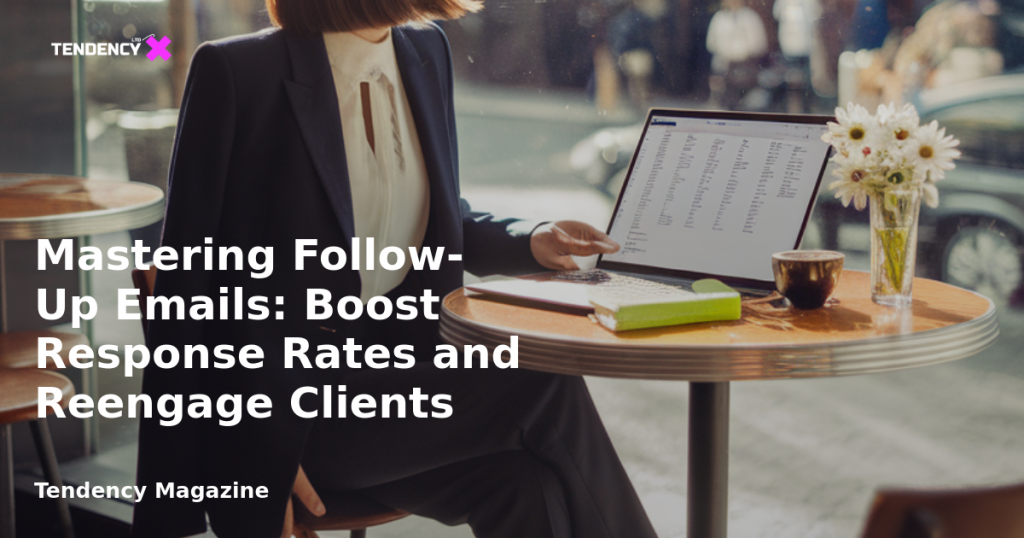Mastering Follow-Up Emails: Boost Response Rates and Reengage Clients

Table of Contents
- Understanding Follow-Up Emails
- Types of Follow-Up Emails
- Crafting the Perfect Follow-Up Email
- Essential Follow-Up Email Templates
- Frequently Asked Questions
Understanding Follow-Up Emails
A follow-up email serves as a continuation or recap of a previous message or interaction. Its primary purpose is to remind the recipient of your genuine interest in them and to prompt a response or action. Follow-up emails can vary widely in their calls to action (CTAs), which may include requesting a direct response, offering additional information, correcting errors, reminding the recipient of a connection, or encouraging a purchase.
To streamline the process, businesses can use follow-up email templates. These templates help maintain a consistent tone while allowing for personalization through auto-fill fields that insert relevant details like dates, job titles, or company names. Additionally, cold email software can automate the sending of follow-up emails, ensuring timely communication after initial interactions.
Types of Follow-Up Emails
Follow-up emails can be utilized in a variety of situations, each with its own unique purpose and approach:
– After a Meeting: Send a thank-you email to recap the meeting, outline next steps, and provide additional resources.
– After a Networking Event: Write to thank your host and suggest ways to continue collaborating. Follow-up with contacts you met to solidify connections and expand your network.
– After Hosting an Event: As a host, send follow-up emails to summarize key points, request feedback, or answer questions.
– As Part of a Marketing Campaign: Use follow-up emails to encourage new customers to explore a product line, offering discounts or more information.
– To Address an Abandoned Cart: Use automated follow-up emails to remind customers of items left in their cart and offer incentives like discounts or free shipping.
– After an Interview: Send a follow-up email post-interview to express gratitude, highlight your expertise, or mention overlooked points.
Crafting the Perfect Follow-Up Email
Creating an effective follow-up email involves several best practices:
– Keep It Brief: Follow-up emails should be concise, serving as polite reminders without overwhelming the recipient.
– Clear Subject Line: Use a subject line that sets a positive tone and indicates the need for action or attention.
– Professional Tone: Maintain a balance between friendly and formal to avoid coming across as frustrated or impatient.
– Reference Previous Interactions: Summarize key points from prior communications to jog the recipient’s memory.
– Clarify Action Items: Ensure the recipient knows exactly what is expected of them with a clear call-to-action.
– Include a Polite Sign-Off: Conclude with a courteous sign-off to leave a positive impression.
– Exercise Restraint: Avoid sending too many follow-ups, as this can be counterproductive.
Essential Follow-Up Email Templates
Here are some common scenarios for follow-up emails, along with templates that adhere to best practices. Customize these templates to suit your audience:
1. After a Meeting with a Potential Customer
– [Template Image]
2. Following Up with Someone You Met at a Networking Event
– [Template Image]
3. After a Job Interview
– [Template Image]
4. A Second Email After a Cold Email
– [Template Image]
5. To Remind a Customer About an Abandoned Cart
– [Template Image]
6. As Part of a Marketing Campaign
– [Template Image]
Frequently Asked Questions
How do you write a follow-up email after no response?
When you haven’t received a response, it’s appropriate to send one or two concise and polite reminders. Confirm receipt of the previous email, summarize earlier messages, and maintain a professional tone. Acknowledge their busy schedule, clarify action items, and be patient.
How do I professionally say I’m following up?
Use a clear subject line and briefly mention that you’re following up. Reference important points from previous interactions and include a clear call to action. A polite sign-off leaves a positive impression.
What is an example of a great follow-up email?
A great follow-up email is concise, polite, and offers clear action items. Here’s an example after a job interview:
“Hi [hiring manager],
It was a pleasure meeting to discuss my potential for the role of [job title]. After learning more about the role, I believe my experience with [skill 1] and [skill 2] will make me a good fit, and I’m excited to be part of a company that values [company value 1] and [company value 2].
Please let me know if you have any further questions.
I look forward to hearing from you.
Best, [your name]”
Conclusion
Mastering follow-up emails is crucial for boosting response rates and reengaging clients. By understanding the different types of follow-up emails and employing best practices in crafting them, businesses can significantly enhance their communication strategies. Whether you’re following up after a meeting, a networking event, or as part of a marketing campaign, a well-crafted follow-up email can be the key to unlocking new opportunities and fostering stronger relationships.
2025 Tendency LTD. All rights reserved.

